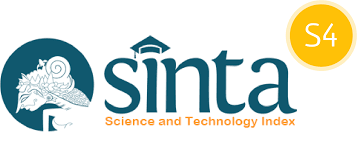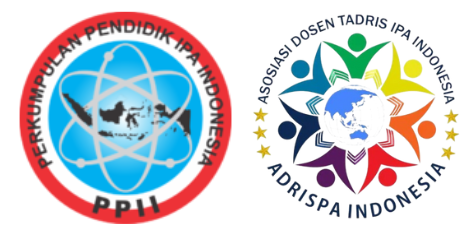PEMANFAATAN LIVEWORKSHEETS TERINTEGRASI AUGMENTED REALITY UNTUK MENINGKATKAN HASIL BELAJAR TATA SURYA PESERTA DIDIK KELAS VII D SMPN 26 SEMARANG
DOI:
https://doi.org/10.35719/vektor.v4i02.92Keywords:
Hasil belajar, Augmented Reality, LiveworksheetsAbstract
Peserta didik kelas VII D SMPN 26 Semarang Semester Genap Tahun Ajaran 2022/2023 memiliki hasil belajar yang rendah pada materi sistem tata surya. Augmented Reality (AR) merupakan media belajar yang mampu mampu memvisualisasikan materi abstrak. Sedangkan Liveworksheets merupakan sarana untuk mewadahi instruksi belajar dalam bentuk LKPD. Oleh karena itu, liveworksheets terintegrasi dengan AR didapuk sebagai media yang tepat untuk meraih tujuan penelitian yaitu meningkatkan hasil belajar Peserta didik kelas VII D SMPN 26 Semarang Semester Genap Tahun Ajaran 2022/2023. Penelitian Tindakan Kelas (PTK) ini memanfaatkan desain Siklus PTK Kemmis dan McTaggart yaitu Perencanaan (Plan), Tindakan (Act), Observasi (Observ) dan Refleksi (Reflection) dengan pengambilan data nilai kognitif dalam bentuk post-test menggunakan soal pilihan ganda. Kesimpulan yang diperoleh adalah adanya peningkatan hasil belajar pada 88% peserta didik kelas VII D SMPN 26 Semarang setelah pelaksanaan 2 siklus PTK.
Kata Kunci: Hasil belajar, liveworksheets, Augmented Reality.
Class VII D students of SMPN 26 Semarang Even Semester 2022/2023 Academic Year have low learning outcomes in the solar system material. Augmented Reality (AR) is a learning media capable of visualizing abstract material. While Liveworksheets are a means to accommodate learning instructions in the form of LKPD. Therefore, liveworksheets integrated with AR were lined up as the right medium to achieve the research objective, namely to improve the learning outcomes of Class VIID students of SMPN 26 Semarang Even Semester 2022/2023 Academic Year. This Classroom Action Research utilizes the Kemmis and McTaggart PTK Cycle design namely Planning, Action (Act), Observation (Observ) and Reflection by collecting cognitive value data in the form of a post-test using multiple choice questions. The conclusion obtained is that there is an increase in learning outcomes for 88% of class VIID students of SMPN 26 Semarang after carrying out 2 cycles.
Keywords: learning outcomes, liveworksheets, Augmented Reality.
References
Albaladejo, E. G., Cerdá, A. G., Carreres, A. L., Lledó, G. L., Lledó, A. L., & Vázquez, E. P. (2020). Differences Between Traditional and Augmented Reality Teaching. Education and New Developments, 226–230. https://doi.org/10.36315/2020end049
Ariskasari, V., & Sulisworo, D. (2021). Developing the Interactive Worksheet Supported by Simulation and Liveworksheet on Physics Learning. Proceedings of WRS International Conference, December.
Asrizal, A., Festiyed, F., & Sumarmin, R. (2017). Analisis Kebutuhan Pengembangan Bahan Ajar Ipa Terpadu Bermuatan Literasi Era Digital Untuk Pembelajaran Siswa Smp Kelas Viii. Jurnal Eksakta Pendidikan (Jep), 1(1), 1. https://doi.org/10.24036/jep/vol1-iss1/27
Asrori, & Rusman. (2020). Classroom Action Research Pengembangan Kompetensi Guru. Pena Persada.
Farhana, H., Awiria, & Muttaqien, N. (2018). Penelitian Tindakan Kelas.
Fatma, Y., Salim, A., & Hayami, R. (2021). Augmented reality berbasis android sebagai media pembelajaran sistem tata surya. CoSciTech, 2(1), 53–59. https://doi.org/https://doi.org/10.37859/coscitech.v2i1.2178
Fauzi, A., Rahmatih, A. N., Indraswati, D., & Sobri, M. (2021). Penggunan Situs Liveworksheets untuk Mengembangkan LKPD Interaktif di Sekolah Dasar. 2(3), 232–240.
Febriansyah, F. (2021). Penerapan Model Pembelajaran Discovery Learning Untuk Meningkatkan Kreativitas Dan Prestasi Belajar. Prosiding Seminar Nasional Etnomatnesia, 10(1), 455–458. https://doi.org/10.33369/diadik.v10i1.18104
Febryanti, N. P. (2022). E- LKPD Assisted with Liveworksheets to Improve Students ’ Critical Thinking Skills on Material Shifting Direction of Equilibrium. 4(4), 5934–5942.
Gunadi, G., Haryono, H., & Purwanti, E. (2022). The Analysis of 21 st Century Learning Implementation and Competency Achievement of Junior High School Students in 3T Regions. 11(1), 10–18.
Hindun, A. S. (2019). Implementasi Teknologi Augmented Reality Berbasis Android : Sebagai Media Pembelajaran IPA yang Bermakna. Perspektif, 444–459. https://doi.org/10.53947/perspekt.v1i5.171
Hurrahma, M., & Sylvia, I. (2022). Efektivitas E-LKPD Berbasis Liveworksheet dalam Meningkatkan Hasil Belajar Sosiologi Peserta Didik di Kelas XI IPS SMA N 5 Padang. 4(1), 14–22.
Hüseyin Kul, H., & Berber, A. (2022). The Effects of Augmented Reality in a 7 th-Grade Science Lesson on Students’ Academic Achievement and Motivation. J.Sci.Learn.2022, 5(2), 193–203. https://doi.org/10.17509/jsl.v5i2.42952
Jatiningrum, W. S., & Astuti, F. H. (2021). Usulan Manajemen Penggunaan Handphone di Sekolah Bagi Siswa SMP di Kota Yogyakarta. Jarlit, 16(January).
Khikmiyah, F. (2020). Implementasi Web Live Worksheet Berbasis Problem Based Learning Dalam Pembelajaran. Pedagogy, 6, 1–12.
Kiryakova, G., Angelova, N., & Yordanova, L. (2018). The potential of augmented reality to transform education into Smart education. TEM Journal, 7(3), 556–565. https://doi.org/10.18421/TEM73-11
Kustiani, L., & Hariani, L. S. (2018). Faktor-Faktor Yang Mempengaruhi Hasil Belajar Siswa. 12(1), 14–22.
Mahmud, & Priatna, T. (2008). Penelitian Tindakan Kelas: Teori dan Praktik. Tsabita.
Mubarokah, S. (2022). Tantangan Implementasi Pendekatan TaRL ( Teaching at the Right Level ) dalam Literasi Dasar yang Inklusif di Madrasah Ibtida ’ iyah Lombok Timur. BADA`A, 4(1), 165–179. https://doi.org/10.37216/badaa.v4i1.582
Nilakusmawati, D. P. E., Sari, K., & Puspawati, N. M. (2015). Panduan Penelitian Tindakan Kelas. Universitas Udayana.
Petrov, P. D., & Atanasova, T. V. (2020). The Effect of augmented reality on students’ learning performance in stem education. Information (Switzerland), 11(4). https://doi.org/10.3390/INFO11040209
Purwandari, P., Yusro, A. C., & Purwito, A. (2021). Modul Fisika Berbasis Augmented Reality Sebagai Alternatif Sumber Belajar Siswa. Jurnal Ilmiah Pendidikan Fisika, 5(1), 38. https://doi.org/10.20527/jipf.v5i1.2874
Putra, E. E. (2022). Implementasi Kurikulum Merdeka untuk Pemulihan Pembelajaran (Kurikulum Paradigma Baru di Sekolah Penggerak). Desain Merdeka Belajar Dalam Pendidikan Kimia Dan Inovasi Pembelajaran Pasca Pandemi Covid-19, 1–5.
Putri, H., Susiani, D., Wandani, N. S., & Putri, F. A. (2022). Instrumen Penilaian Hasil Pembelajaran Kognitif pada Tes Uraian dan Tes Objektif. Jurnal Papeda: Jurnal Publikasi Pendidikan Dasar, 4(2), 139–148. https://doi.org/10.36232/jurnalpendidikandasar.v4i2.2649
Turhusna, D., & Solatun, S. (2020). Perbedaan individu dalam proses pembelajaran. Jurnal Pendidikan Islam Anak Usia Dini Volume, 2(Maret), 28–42.
Yilmaz, O. (2021). Augmented Reality in Science Education: An Application in Higher Education. Shanlax International Journal of Education, 9(3), 136–148. https://doi.org/10.34293/education.v9i3.3907
Downloads
Published
Versions
- 2024-12-30 (2)
- 2024-06-13 (1)
How to Cite
Issue
Section
License
Copyright (c) 2023 Almira Nurfi Hafizah, Siti Suhartini, Arif Widiyatmoko

This work is licensed under a Creative Commons Attribution-ShareAlike 4.0 International License.
Authors who publish with this journal agree to the following terms:
- Authors retain copyright and grant the journal right of first publication with the work simultaneously licensed under the terms of the CC BY-SA 4.0 License that allows others to share the work with an acknowledgment of the work's authorship and initial publication in this journal.
- Authors are able to enter into separate, additional contractual arrangements for the non-exclusive distribution of the journal's published version of the work (e.g., post it to an institutional repository or publish it in a book), with an acknowledgment of its initial publication in this journal.
- Authors are permitted and encouraged to post their work online (e.g., in institutional repositories or on their website) prior to and during the submission process, as it can lead to productive exchanges, as well as earlier and greater citation of published work.







